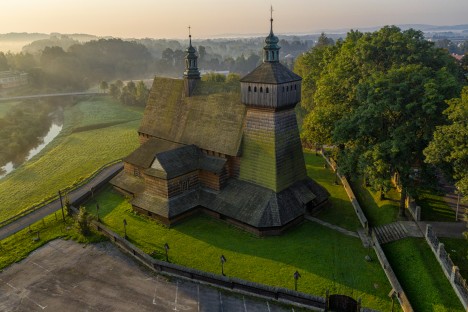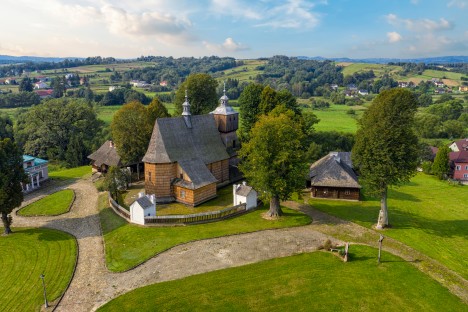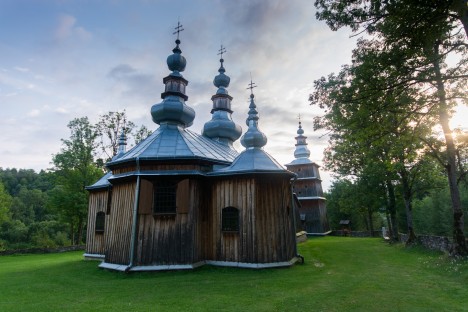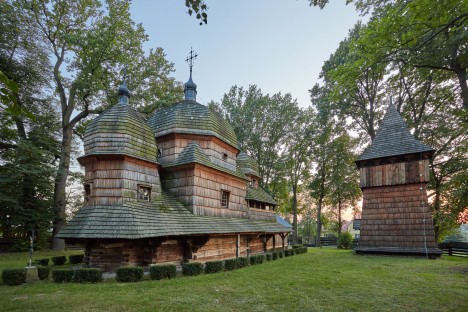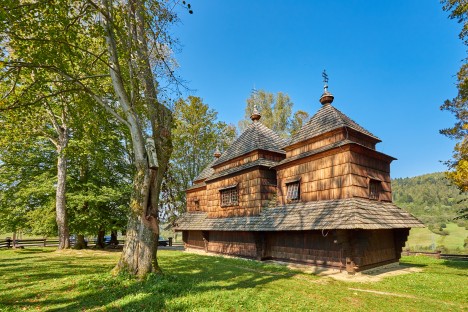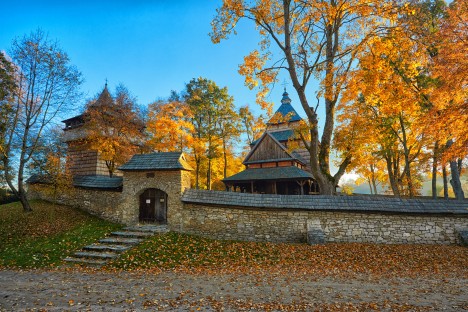The logo of UNESCO is known to tourists from all over the world. This inconspicuous sign is used to mark heritage sites of great importance for the humanity. The map of Podkarpackie comprises six sites of this kind.

These include two wooden Gothic churches in Blizne and in Haczów and four unique tserkovs in Chotyniec, Radruż, Smolnik and Turzańsk. All of these landmarks are definitely worth visiting. Read more about each of these unique places…
HACZÓW
Church of the Assumption of the Blessed Virgin Mary and Archangel Michael is a log structure; its main body is made of logs interlocked at the corners. As a result the entire edifice was built with no use of nails. The church in Haczów is one of the oldest and largest buildings of this type in the world. In fact, all the UNESCO heritage sites in Podkarpackie are log churches.
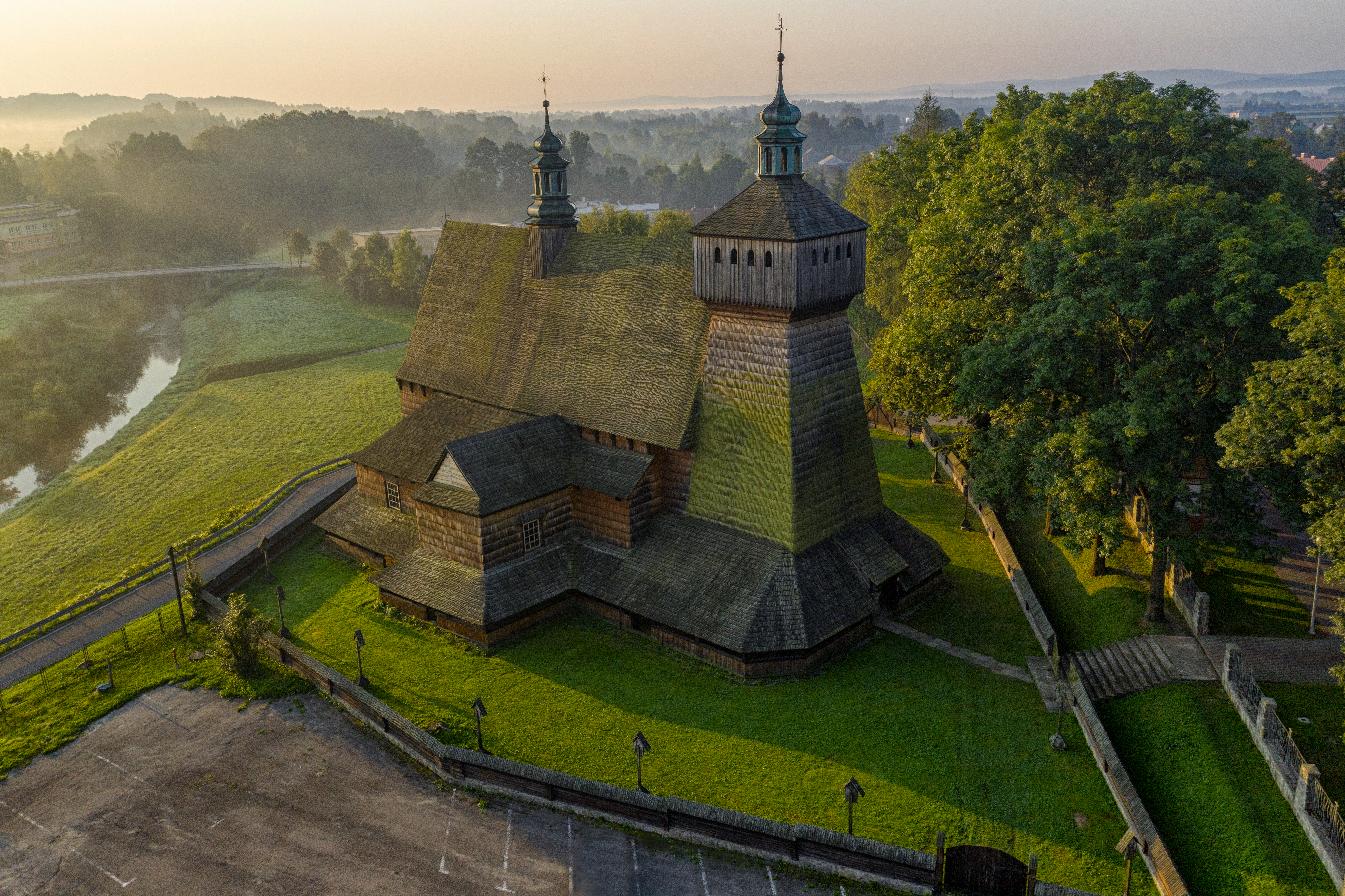 Built in the first half of the 1400s, the church in Haczów served the local people for centuries. For them it was of extraordinary importance and one of the reasons was the Gothic Pietà (today over 600 years old!) which was brought to them by the water of the Wisłok river.
Built in the first half of the 1400s, the church in Haczów served the local people for centuries. For them it was of extraordinary importance and one of the reasons was the Gothic Pietà (today over 600 years old!) which was brought to them by the water of the Wisłok river.
The wooden church in Haczów amazes as much with its dimensions and age as with its remarkable interiors. It stands out for its painted embellishments, varying in age, featuring elaborate iconographic contents and fine artistry – says Anna Fortuna Marek, historian of art, Head of the Rzeszów branch of the National Heritage Board. She adds that it was these paintings that explained the Bible to our ancestors, who could not read. Today over five hundred years later they continue fascinating with their artistry, the presentation and the colourful tale.
Until recently believed to be the oldest in Poland, the church in Haczów bears witness to history spanning more than half a millennium. The tangible evidence of this includes carved inscriptions on the outer walls of the building, such as the one from 1771 informing about a flood; the marking shows the level to which the water reached.
The church experienced various fortunes. The worst times include the events of the 1970s when the communist authorities were planning to transform the building into a museum of agricultural machines. Fortunately, the outrageous idea fell through and there is a big chance that the church in Haczów will continue to be a witness of history for future generations as well.
BLIZNE
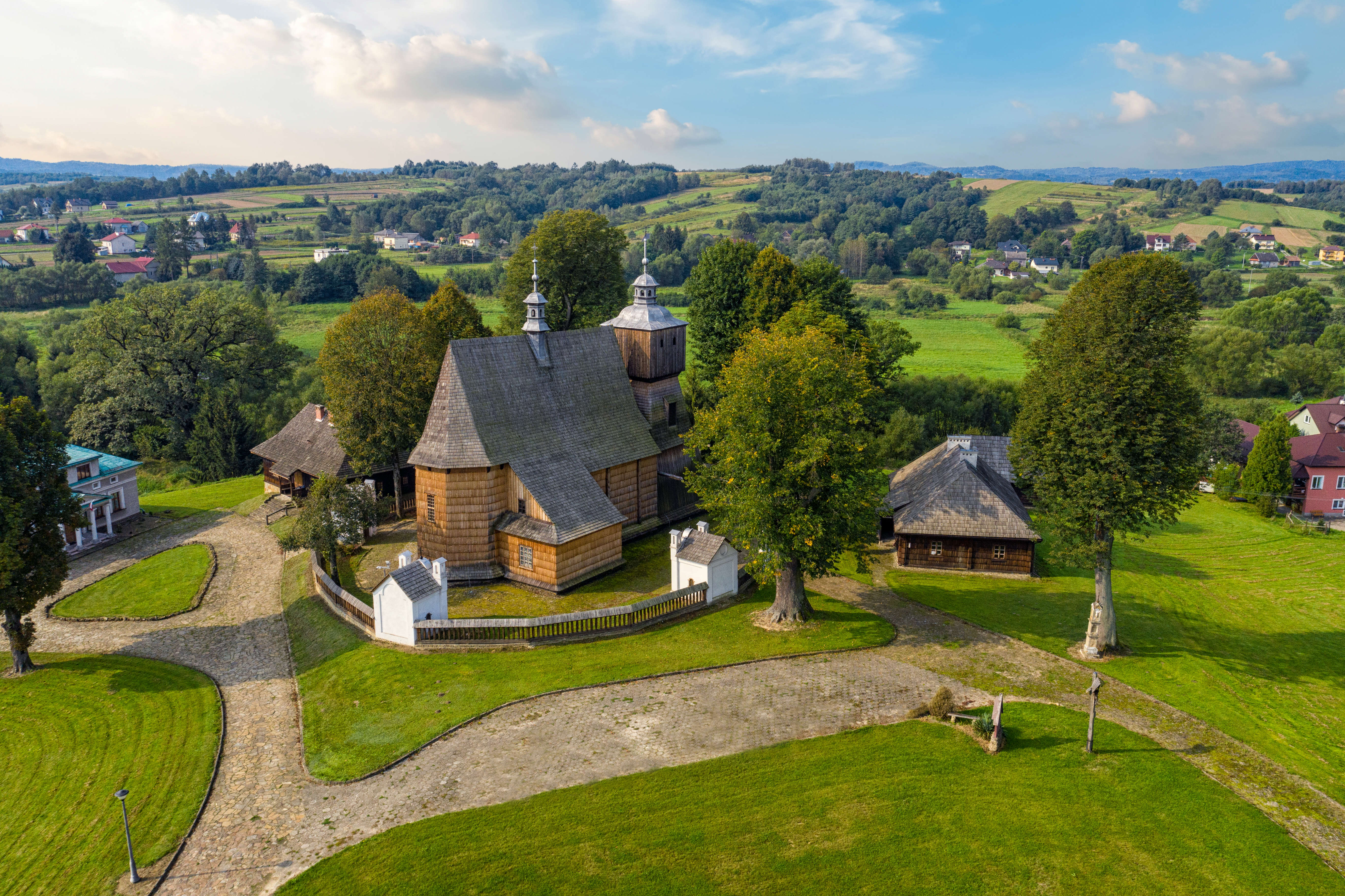 All Saints’ Church in Blizne, another UNESCO site in Podkarpackie, is slightly smaller and only a little younger than the building in Haczów, as it is dated to the second half of the 1400s. It is, however, equally valuable and delightful. Looking at the refined and elegant silhouette of the church, one hardly expects the bright and colourful ornaments inside. Yet, in fact, the trademark features of the church in Blizne include its wall paintings from the 16th, 17th and early 18th century. These polychromes are like the Paupers' Bible taking an unusually elaborate form. A particularly interesting detail can be noticed in the painting which depicts martyrdom of the saints. In this representation the persecutors are shown with exotic facial features, an unquestionable reference to Tartar invasions once plaguing the areas of Blizne.
All Saints’ Church in Blizne, another UNESCO site in Podkarpackie, is slightly smaller and only a little younger than the building in Haczów, as it is dated to the second half of the 1400s. It is, however, equally valuable and delightful. Looking at the refined and elegant silhouette of the church, one hardly expects the bright and colourful ornaments inside. Yet, in fact, the trademark features of the church in Blizne include its wall paintings from the 16th, 17th and early 18th century. These polychromes are like the Paupers' Bible taking an unusually elaborate form. A particularly interesting detail can be noticed in the painting which depicts martyrdom of the saints. In this representation the persecutors are shown with exotic facial features, an unquestionable reference to Tartar invasions once plaguing the areas of Blizne.
An unusual legend is connected with one of such events. In 1624, when Tartar army appeared in Blizne, residents of the village looked for shelter in the church. The Tartars were defeated, but they managed to take 60 people into captivity. Yet, it turned out that the villagers had a very special protector, Archangel Michael who set the prisoners free and drove away the invaders. All this, allegedly, happened on a hill well visible from the church grounds, on the other side of the road where today we can see the shrine of St. Michael.
Just like any legend, this one also combines historical facts with folk tales. Yet, it is true that in addition to its religious function, the church in Blizne also provided protection. The building was surrounded with a wall, and people living in Blizne sought refuge there in case of danger.
RADRUŻ
Even at the first glance you can see that the tserkov of St. Paraskeva in Radruż is absolutely unique. Why is it so? – Presumably built towards the end of the 1500s, this is one of the oldest wooden churches of Eastern Christianity which have been preserved in Poland – explains Anna Fortuna-Marek. The tserkov in Radruż stands out for its age, shape and form. It has a three-part structure, with a separate section for women, the nave in which men used to prey, and the chancel designed for liturgical service. Notably, each of these sections is covered with a tent-shaped roof.
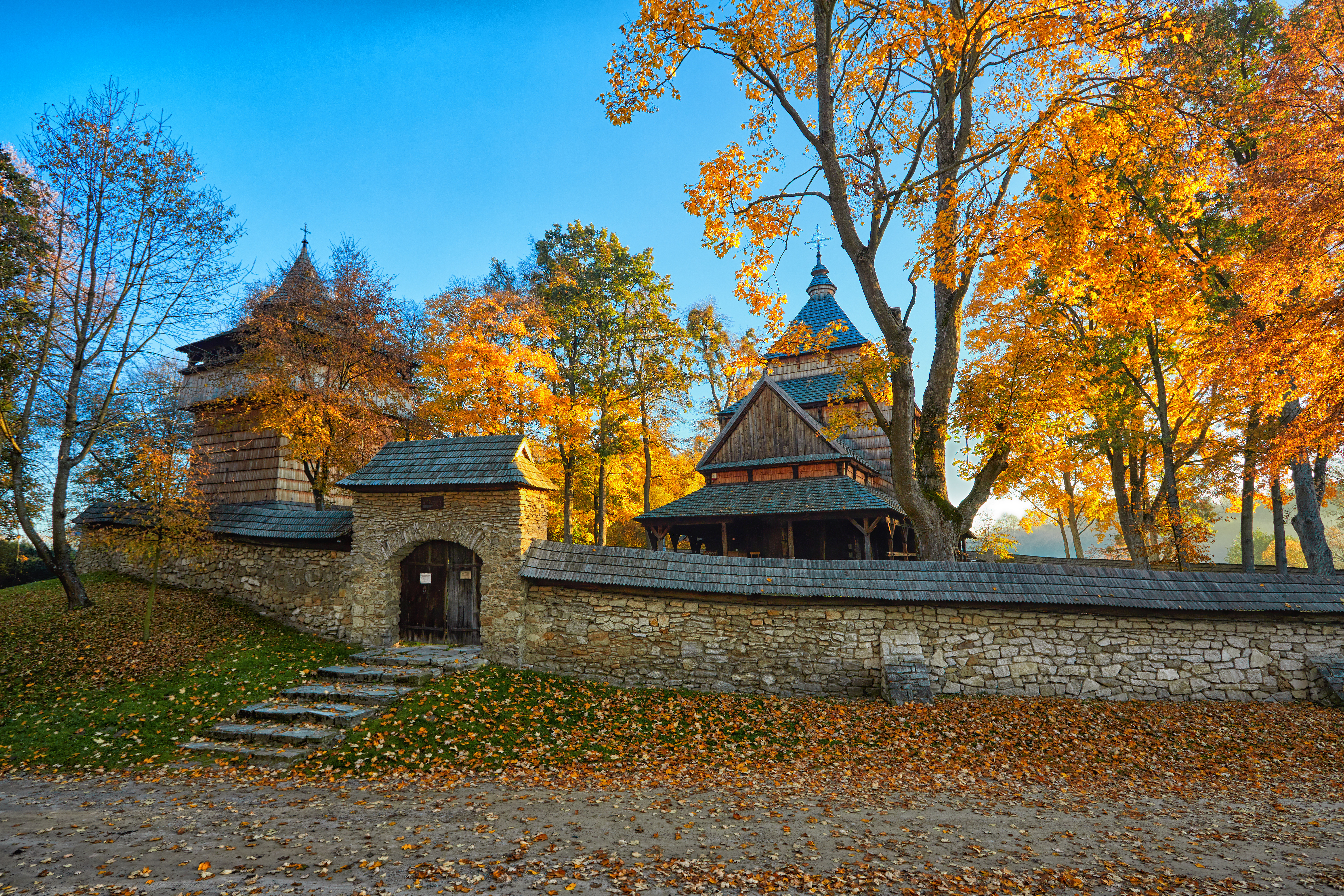 The church in Radruż, however, shares some characteristics with the other UNESCO sites in Podkarpackie. It also used to provide shelter to villagers during invasions, and was even referred to as “Peasants’ Stronghold”. Therefore, in its architecture it is possible to identify defensive elements, particularly visible in the belfry standing nearby.
The church in Radruż, however, shares some characteristics with the other UNESCO sites in Podkarpackie. It also used to provide shelter to villagers during invasions, and was even referred to as “Peasants’ Stronghold”. Therefore, in its architecture it is possible to identify defensive elements, particularly visible in the belfry standing nearby.
During the turbulent times of Tartar invasions, Radruż was a stage of an incredible story. Its main heroine was a beautiful woman, taken into Tartar captivity. Indeed, she became a sultaness, yet after 27 years, to everyone’s astonishment, she returned to her homeland. Indeed, even her husband was so certain of her death, that he had remarried in the meantime. Interestingly, the story of the captive woman from Radruż has been confirmed by historians. The woman was Maria Dubniewiczowa, wife of the alderman of Radruż. In all fairness we must add that the alderman himself, Wasyl Dubniewicz, was so devastated by the fact that he had two wives, that he asked to be interred under the threshold of the tserkov, for eternal penance, so that those entering the church would for ever trample on his grave. Allegedly, one of the two crosses next to the side entrance marks the grave.
CHOTYNIEC
The architecture of the wooden church in Chotyniec, built in the early 1600s, at the first glance reveals that the building is connected with Eastern Christianity. The typical bulbous roofs provide the first hint. Yet the most characteristic feature of the tserkov of Nativity of the Most Holy Mother of God in Chotyniec is the unique, exterior gallery above the women’s section, leading to the formerly existing upper chapel.
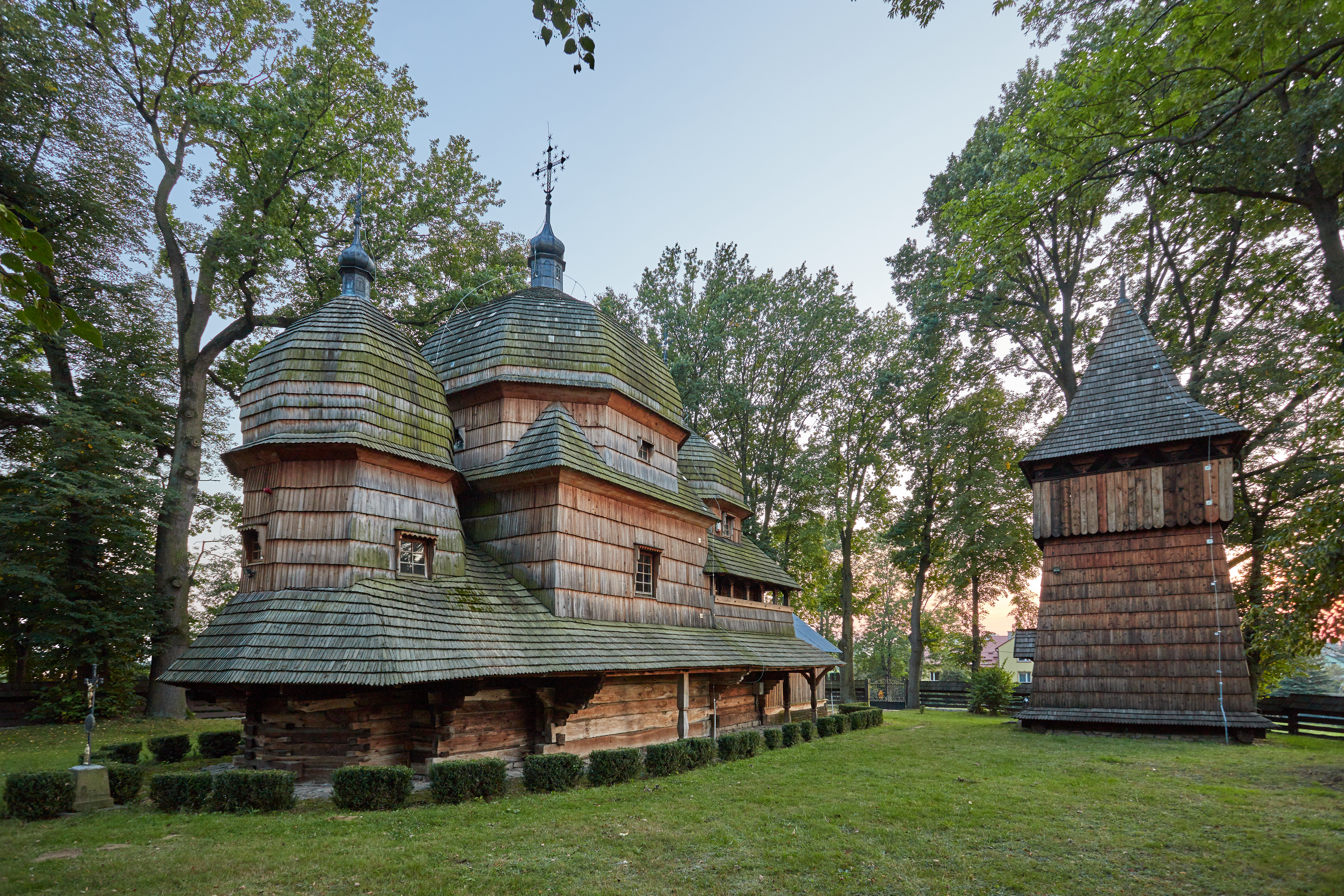 Why did this lovely wooden tserkov need more than one chapel? The reason is that in the early 1700s in accordance with the rules of Greek Catholic Church one location was not allowed to hold more than one liturgical service per day. Since there was a large number of Greek Catholics in these areas, the additional chapel was created within the tserkov so that two services could be conducted each day in Chotyniec. Located upstairs, the chapel of Annunciation received its own iconostasis. Unfortunately it was dismantled in the 19th century.
Why did this lovely wooden tserkov need more than one chapel? The reason is that in the early 1700s in accordance with the rules of Greek Catholic Church one location was not allowed to hold more than one liturgical service per day. Since there was a large number of Greek Catholics in these areas, the additional chapel was created within the tserkov so that two services could be conducted each day in Chotyniec. Located upstairs, the chapel of Annunciation received its own iconostasis. Unfortunately it was dismantled in the 19th century.
The fortunes of the tserkov in Chotyniec were as varied as those of the village itself. As it was mentioned, once the local Greek Catholic community was so big that two chapels were needed. Before WWII the village was inhabited by nearly 3,000 people, mostly representing this denomination. Later, however, the turmoil of WWII and the subsequent enforced population transfers completely changed the situation here. When a small group of Greek Catholics returned to the village in the 1950s, they found the tserkov was being used by Roman Catholics; then 30 years later it was closed down. Fortunately, in the 1990s the Greek Catholic parish was re-established here, and brought life back to the tserkov. Today, thoroughly restored, the church can again be admired in its full glory.
SMOLNIK
Built in 1791, the tserkov in Smolnik nad Sanem is younger than the churches presented above. Unlike the other UNESCO sites in Podkarpackie, the Smolnik tserkov was furnished in contemporary times. The original furnishings were lost as a result of historic upheavals. Despite that the tserkov in Smolnik is still a truly unique landmark, mainly because it represents Bojko-style architecture. The modest-looking, small, yet very characteristic building consists of three basic parts, seemingly separate but complete structures attached to one another, each with its own tent-like hipped roof. Symmetry and centrally oriented layout, two characteristic features of Bojko style, are well visible in the Smolnik tserkov, explains Anna Fortuna-Marek.
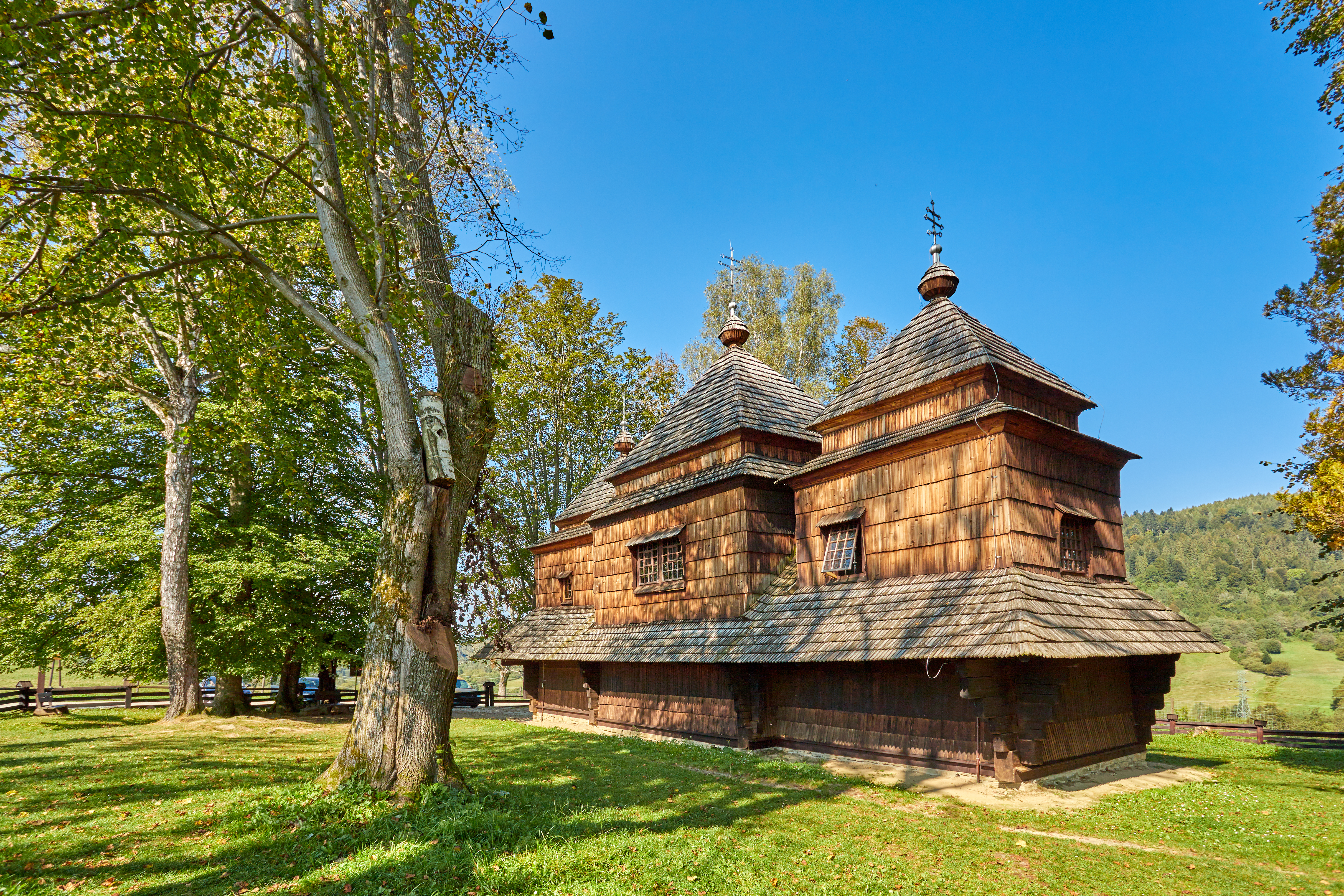 Before WWII in south-eastern outskirts of Poland there were many buildings of this type. Yet only three Bojko churches have survived, the best preserved being the tserkov in Smolnik.
Before WWII in south-eastern outskirts of Poland there were many buildings of this type. Yet only three Bojko churches have survived, the best preserved being the tserkov in Smolnik.
When we see the lovely wooden church standing alone on the hill, and if we imagine that once it stood in the middle of a prosperous village, we will understand how many changes happened during World War II and as a result of the events in its aftermath. Before the war the population of Smolnik was four times larger than today and the tserkov was its epicentre, not only for the Greek Catholic community. The services in the tserkov were also attended by Poles, as the Roman Catholic church was rather far away, and by protestants who came here from Austro-Hungary to work in lumber industry. Following the war and the post-war turbulences everything changed, and the tserkov is the only witness of both the happy times and the tragic events in the lives of the people formerly inhabiting this area.
From the viewpoint of visitors, the tserkov in Smolnik nad Sanem is distinguished by one more special feature - it is the location, in the very heart of the Bieszczady, at the foot of Trohaniec, in the vicinity of hiking and riding trails, along the large “ring-road” of the Bieszczady.
TURZAŃSK
Beautifully blending within the landscape on the border of the Bieszczady and Beskid Mountains, the graceful tserkov of Archangel Michael is located in Turzańsk, on the Osława river. Roughly speaking, everything about it is related to Łemko, or more specifically Eastern-Łemko heritage.
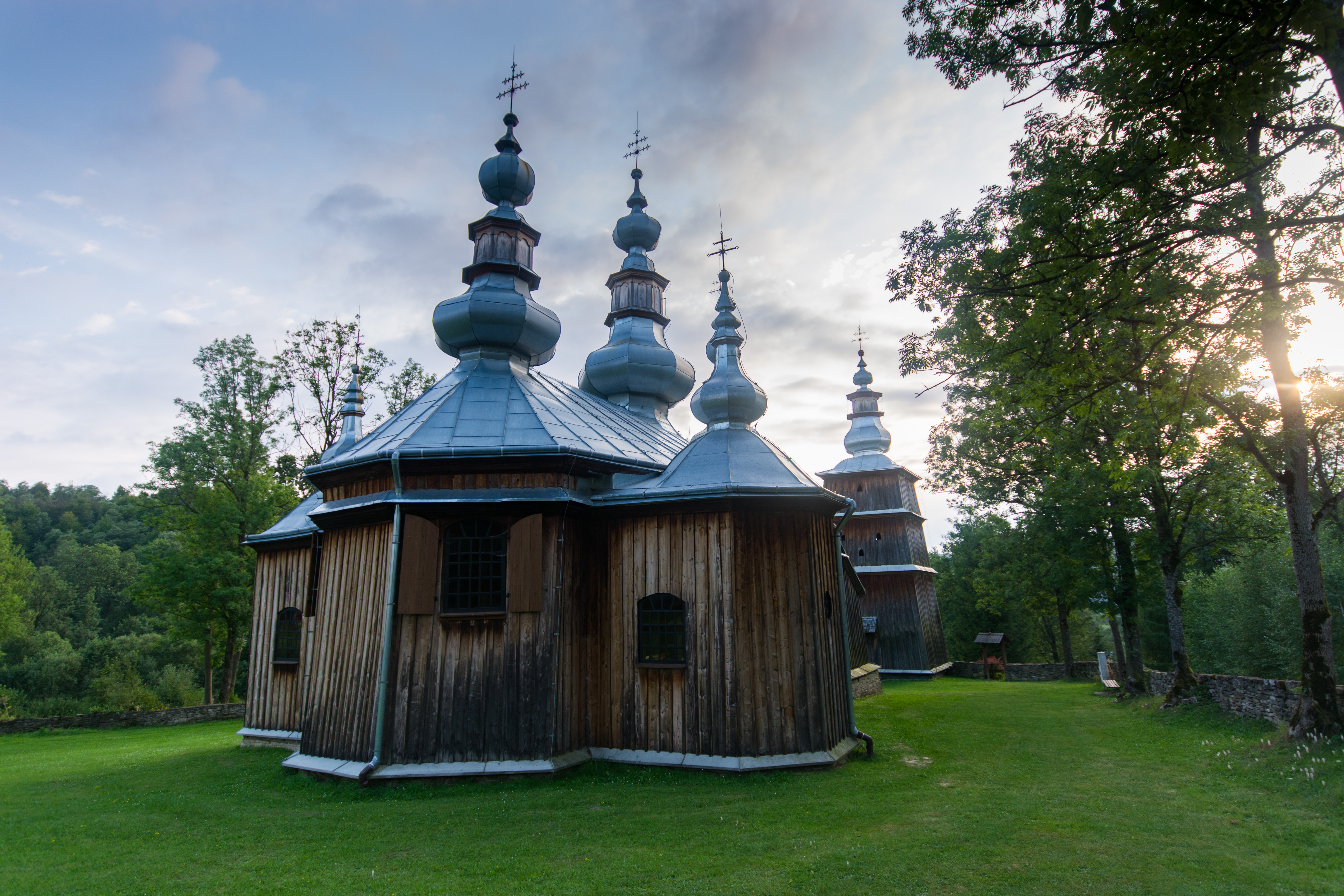 The history of Łemko people, once living in the Beskid-Bieszczady border area is similar to the history of Bojko people in the Bieszczady. Shortly before WWII they were the main ethnic group populating the areas along River Osława. After the war they were forcefully relocated and it seemed Łemko people would never come back.
The history of Łemko people, once living in the Beskid-Bieszczady border area is similar to the history of Bojko people in the Bieszczady. Shortly before WWII they were the main ethnic group populating the areas along River Osława. After the war they were forcefully relocated and it seemed Łemko people would never come back.
What was left behind was the church – the wooden witness of history. Both its architecture and its furnishings represent Łemko heritage. Built in 1801–1803, it is a characteristic example of Eastern-Łemko style. The typical features of the tserkov include its three-part structure, the elongated floor plan, equal height of the wall framework in the three main parts of the church, and most of all five bulbous domes covering the main parts of the tserkov. Analysis of its appearance suggests that the tserkov in Turzańsk is an unusual, ingenious transposition of the archetypal brick Byzantine tserkov, explains Anna Fortuna-Marek.
Another distinctive feature of the church, even more closely linked with Łemko community, is the iconography. The author of the wall paintings, Josyf Bukowczyk, in his rendition of some scenes made reference to the realities of Łemko land in the late 1800s, that is the time when he created the work. You will see here a representation of Christ visiting a Łemko family, as well as a Łemko man sowing grains, and the beautiful landscape, characteristic for the Bieszczady and Beskid mountains.
Importantly, Łemko people returned to this land, and from 1960s Turzańsk is home to an Orthodox parish. Thanks to this small Łemko community, the tserkov continues to be alive.
The text was written thanks the support from Ms. Anna Fortuna Marek, Head of the Rzeszów branch of the National Heritage Board.
